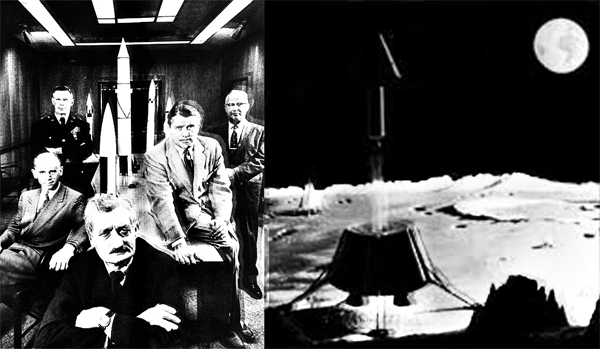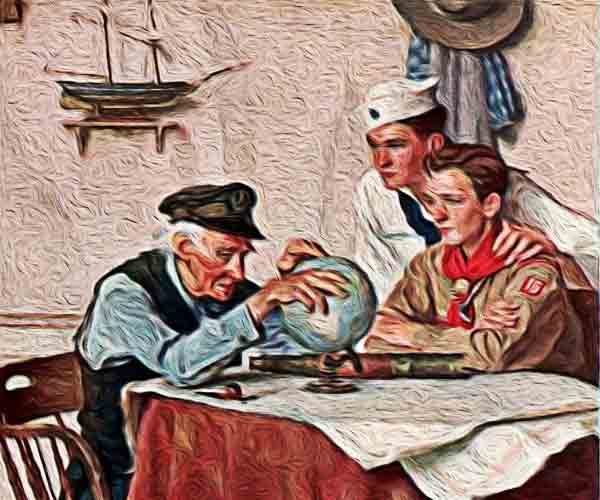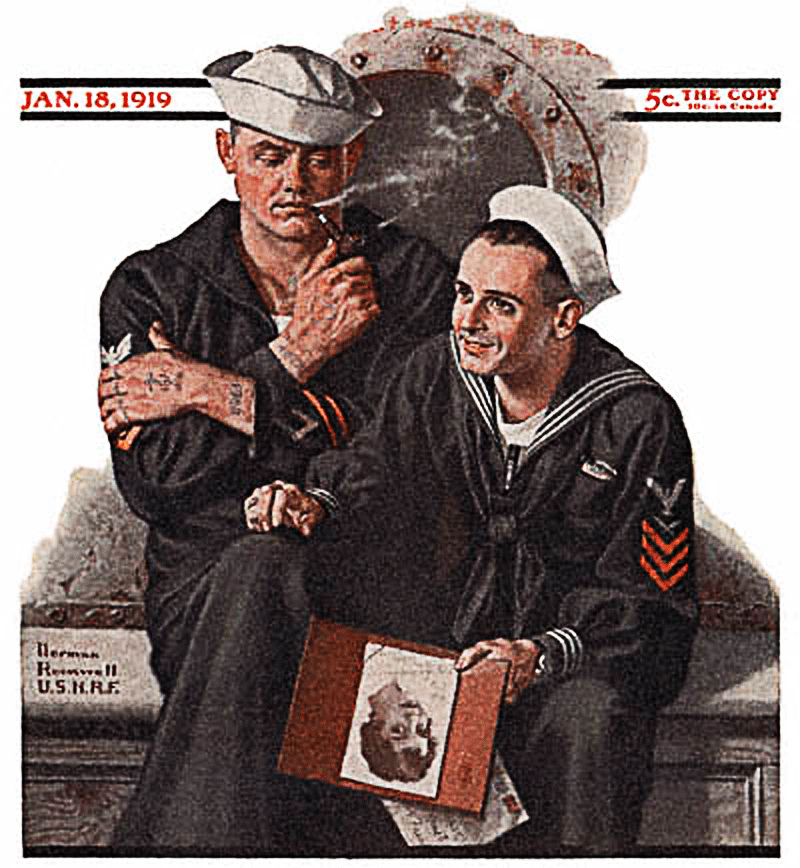
United States-led attack on Afghanistan begins on October 07, 2001
United States-led attack on Afghanistan begins: On October 7, 2001, a United States-led coalition begins attacks on Taliban-controlled Afghanistan with an intense bombing campaign by American and British forces.
Logistical support was provided by other nations including France, Germany, Australia and Canada and, later, troops were provided by the anti-Taliban Northern Alliance rebels. The invasion of Afghanistan was the opening salvo in the United States “war on terrorism” and a response to the September 11, 2001, terrorist attacks on New York and Washington, D.C.

Named “Operation Enduring Freedom” in U.S. military parlance, the invasion of Afghanistan was intended to target terrorist mastermind Osama bin Laden’s al-Qaida organization, which was based in the country, as well as the extreme fundamentalist Taliban government that had ruled most of the country since 1996 and supported and protected al-Qaida.
The Taliban, which had imposed its extremist version of Islam on the entire country, also perpetrated countless human rights abuses against its people, especially women, girls and ethnic Hazaras. During their rule, large numbers of Afghans lived in utter poverty, and as many as 4 million Afghans are thought to have suffered from starvation.
In the weeks prior to the invasion, both the United States and the U.N. Security Council had demanded that the Taliban turn over Osama bin Laden for prosecution. After deeming the Taliban’s counteroffers unsatisfactory - among them to try bin Laden in an Islamic court - the invasion began with an aerial bombardment of Taliban and al-Qaida installations in Kabul, Kandahar, Jalalabad, Konduz and Mazar-e-Sharif.
Other coalition planes flew in airdrops of humanitarian supplies for Afghan civilians. The Taliban called the actions “an attack on Islam”. In a taped statement released to the Arabic al-Jazeera television network, Osama bin Laden called for a war against the entire non-Muslim world.
History Channel / Wikipedia / Naval History and Heritage Command.mil / Army Transportation Museum.mil /
Federation of American Scientists.org /Council on Foreign Relations.org / Conflict Casualties - DCAS.mil / Canadian Encyclopedia /
United States-led attack on Afghanistan begins on October 07, 2001 (YouTube) 

President Eisenhower approves the transfer of all U.S. Army space-related activities to NASA on October 21, 1959
President Eisenhower approves the transfer of all U.S. Army space-related activities to NASA: subject to the approval of Congress on October 21, 1959.
The Space Race
After World War II drew to a close in the mid-20th century, a new conflict began. Known as the Cold War, this battle pitted the world’s two great powers–the democratic, capitalist United States and the communist Soviet Union–against each other. Beginning in the late 1950s, space would become another dramatic arena for this competition, as each side sought to prove the superiority of its technology, its military firepower and–by extension–its political-economic system.
Causes of the Space Race
By the mid-1950s, the U.S.-Soviet Cold War had worked its way into the fabric of everyday life in both countries, fueled by the arms race and the growing threat of nuclear weapons, wide-ranging espionage and counter-espionage between the two countries, war in Korea and a clash of words and ideas carried out in the media. These tensions would continue throughout the space race, exacerbated by such events as the construction of the Berlin Wall in 1961, the Cuban missile crisis of 1962 and the outbreak of war in Southeast Asia.
Space exploration served as another dramatic arena for Cold War competition. On October 4, 1957, a Soviet R-7 intercontinental ballistic missile launched Sputnik (Russian for “traveler”), the world’s first artificial satellite and the first man-made object to be placed into the Earth’s orbit. Sputnik’s launch came as a surprise, and not a pleasant one, to most Americans. In the United States, space was seen as the next frontier, a logical extension of the grand American tradition of exploration, and it was crucial not to lose too much ground to the Soviets. In addition, this demonstration of the overwhelming power of the R-7 missile–seemingly capable of delivering a nuclear warhead into U.S. air space–made gathering intelligence about Soviet military activities particularly urgent.

NASA Is Created
In 1958, the U.S. launched its own satellite, Explorer I, designed by the U.S. Army under the direction of rocket scientist Wernher von Braun. That same year, President Dwight D. Eisenhower signed a public order creating the National Aeronautics and Space Administration (NASA), a federal agency dedicated to space exploration.
Eisenhower also created two national security-oriented space programs that would operate simultaneously with NASA’s program. The first, spearheaded by the U.S. Air Force, dedicated itself to exploiting the military potential of space. The second, led by the Central Intelligence Agency (CIA), the Air Force and a new organization called the National Reconnaissance Office (the existence of which was kept classified until the early 1990s) was code-named Corona; it would use orbiting satellites to gather intelligence on the Soviet Union and its allies.
Space Race Heats Up: Men (And Chimps) Orbit Earth
In 1959, the Soviet space program took another step forward with the launch of Luna 2, the first space probe to hit the moon. In April 1961, the Soviet cosmonaut Yuri Gagarin became the first person to orbit Earth, traveling in the capsule-like spacecraft Vostok 1. For the U.S. effort to send a man into space, dubbed Project Mercury, NASA engineers designed a smaller, cone-shaped capsule far lighter than Vostok; they tested the craft with chimpanzees, and held a final test flight in March 1961 before the Soviets were able to pull ahead with Gagarin’s launch.
On May 5, astronaut Alan Shepard became the first American in space (though not in orbit).
Later that May, President John F. Kennedy made the bold, public claim that the U.S. would land a man on the moon before the end of the decade. In February 1962, John Glenn became the first American to orbit Earth, and by the end of that year, the foundations of NASA’s lunar landing program - dubbed Project Apollo were in place.

Achievements of Apollo
From 1961 to 1964, NASA’s budget was increased almost 500 percent, and the lunar landing program eventually involved some 34,000 NASA employees and 375,000 employees of industrial and university contractors. Apollo suffered a setback in January 1967, when three astronauts were killed after their spacecraft caught fire during a launch simulation. Meanwhile, the Soviet Union’s lunar landing program proceeded tentatively, partly due to internal debate over its necessity and to the untimely death (in January 1966) of Sergey Korolyov, chief engineer of the Soviet space program.
December 1968 saw the launch of Apollo 8, the first manned space mission to orbit the moon, from NASA’s massive launch facility on Merritt Island, near Cape Canaveral, Florida.
On July 16, 1969, U.S. astronauts Neil Armstrong, Edwin “Buzz” Aldrin and Michael Collins set off on the Apollo 11 space mission, the first lunar landing attempt.
After landing successfully on July 20, Armstrong became the first man to walk on the moon’s surface; he famously called the moment “one small step for man, one giant leap for mankind”.
Who Won the Space Race?
By landing on the moon, the United States effectively “won” the space race that had begun with Sputnik’s launch in 1957. For their part, the Soviets made four failed attempts to launch a lunar landing craft between 1969 and 1972, including a spectacular launch-pad explosion in July 1969.
From beginning to end, the American public’s attention was captivated by the space race, and the various developments by the Soviet and U.S. space programs were heavily covered in the national media. This frenzy of interest was further encouraged by the new medium of television. Astronauts came to be seen as the ultimate American heroes, and earth-bound men and women seemed to enjoy living vicariously through them.
Soviets, in turn, were pictured as the ultimate villains, with their massive, relentless efforts to surpass America and prove the power of the communist system.
History Channel / Wikipedia / U.S. ARMY Aviation and Missile Life Cycle Management Command / NASA Origins - NASA.gov /
National Archives / Smithsonian National Air and Space Museum.edu / Encyclopedia Britannica /
President Eisenhower approves the transfer of all U.S. Army space-related activities to NASA on October 21, 1959 (YouTube) 

Chuck Yeager breaks the sound barrier on October 14, 1947
Chuck Yeager breaks the sound barrier: U.S. Air Force Captain Chuck Yeager becomes the first person to fly faster than the speed of sound.
Yeager, born in Myra, West Virginia, in 1923, was a combat fighter during World War II and flew 64 missions over Europe. He shot down 13 German planes and was himself shot down over France, but he escaped capture with the assistance of the French Underground. After the war, he was among several volunteers chosen to test-fly the experimental X-1 rocket plane, built by the Bell Aircraft Company to explore the possibility of supersonic flight.

For years, many aviators believed that man was not meant to fly faster than the speed of sound, theorizing that transonic drag rise would tear any aircraft apart.
All that changed on October 14, 1947, when Yeager flew the X-1 over Rogers Dry Lake in Southern California. The X-1 was lifted to an altitude of 25,000 feet by a B-29 aircraft and then released through the bomb bay, rocketing to 40,000 feet and exceeding 662 miles per hour (the sound barrier at that altitude). The rocket plane, nicknamed “Glamorous Glennis” (after Yeager's wife), was designed with thin, unswept wings and a streamlined fuselage modeled after a .50-caliber bullet.
Because of the secrecy of the project, Bell and Yeager’s achievement was not announced until June 1948. Yeager continued to serve as a test pilot, and in 1953 he flew 1,650 miles per hour in an X-1A rocket plane. He retired from the U.S. Air Force in 1975 with the rank of brigadier general.
History Channel / Bell X-1 - Wikipedia / Space.com /
National Geographic.org /Chuck Yeager.org / NASA.gov / National Archives.gov /
Chuck Yeager breaks the sound barrier on October 14, 1947 (YouTube) 

Understanding Military Terminology
Relief In Place
(DOD) An operation in which, by direction of higher authority, all or part of a unit is replaced in an area by the incoming unit and the responsibilities of the replaced elements for the mission and the assigned zone of operations are transferred to the incoming unit.
See also Obstacle.
Joint Publications (JP 3-07.3) Peace Operationss
Religious Advisement
(DOD) The practice of informing the commander on the impact of religion on joint operations to include, but not limited to: worship, rituals, customs, and practices of U.S. military personnel, international forces, and the indigenous population; as well as the impact of military operations on the religious an d humanitarian dynamics in the operational area.
Joint Publications (JP 1-05) Religious Affairs in Joint Operations - Intelligence Resource
Religious affairs
(DOD) The combination of religious support and religious advisement.
Joint Publications (JP 1-05) Religious Affairs in Joint Operations - Intelligence Resource
Religious Support
(DOD) Chaplain-facilitated free exercise of religion through worship, religious and pastoral counseling services, ceremonial honors for the fallen, crisis intervention, and advice to the commander on ethical and moral issues, and morale as affected by religion.
Also called RST.
See also Combatant Command Chaplain; Command Chaplain; Religious Support Team.
Joint Publications (JP 1-05) Religious Affairs in Joint Operations - Intelligence Resource
Religious Support Team
(DOD) A team, comprised of at least one chaplain and one enlisted support person, that works together in designing, implementing, and executing the command religious pr ogram.
Also called RST.
See also Combatant Command Chaplain; Command Chaplain; Religious Support.
Joint Publications (JP 1-05) Religious Affairs in Joint Operations - Intelligence Resource
Joint Publication - Department of Defense Dictionary of Military and Associated Terms

The Old Salt’s Corner

“THE OLD OUTFIT”
“Written By a World War Two Sailor”
Come gather round me lads and I'll tell you a thing or two,
about the way we ran the Navy in nineteen forty two.
When wooden ships and iron men were barely out of sight,
I am going to give you some facts just to set the record right.
We wore the ole bell bottoms, with a flat hat on our head,
and we always hit the sack at night. We never “went to bed”.
Our uniforms were worn ashore, and we were mighty proud.
Never thought of wearing civvies, in fact they were not allowed.
Now when a ship puts out to sea. I'll tell you son - it hurts!
When suddenly you notice that half the crews wearing skirts.
And it's hard for me to imagine, a female boatswains mate,
stopping on the Quarter deck to make sure her stockings are straight.
What happened to the KiYi brush, and the old sa lt-water bath?
Holy stoning decks at night- cause you stirred old Bosn's wrath!
We always had our gedunk stand and lots of pogey bait.
And it always took a hitch or two, just to make a rate.
In your seabag all your skivvies, were neatly stopped and rolled.
And the blankets on your sack had better have a three-inch fold.
Your little ditty bag . . it is hard to believe just how much it held,
and you wouldn't go ashore with pants that hadn't been spiked and belled.
Oh we had our belly robbers - but there weren't too many gripes.
For the deck apes were never hungry and there were no starving snipes.
Now you never hear of Davey Jones, Shellbacks Or Polliwogs,
and you never splice the mainbrace to receive your da ily grog.
Now you never have to dog a watch or stand the main event.
You even tie your lines today - back in my time they were bent.
We were all two-fisted drinkers and no one thought you sinned,
if you staggered back aboard your ship, three sheets to the wind.
And with just a couple hours of sleep you regained your usual luster.
Bright eyed and bushy tailed- you still made morning muster.
Rocks and shoals have long since gone, and now it's U.C.M.J.
THEN the old man handled everything if you should go astray.
Now they steer the ships with dials, and I wouldn't be surprised,
if some day they sailed the damned things- from the beach computerized.
So when my earthly hitch is over, and the good Lord picks the best,
I'LL walk right up to HIM and say, “Sir, I have but one request -
Let me sail the seas of Heaven in a coat of Navy blue.
And unfilled shadows heaven casts.
Like I did so long ago on earth - way back in nineteen-forty two.”
~ Lt. J.G Don Ballard joined the U.S. Navy in 1935 when he received $21.00 per Month. What the author says in his words is true. In 1935 only 13 men joined the Navy (from Tennessee) and Don was one of them.
Proudly copied from Lt. Ballard USN Retired, April 13, 2002 , who loved the Navy and all the men he served with in all of World War Two.

“I’m Just Sayin”
“Next to trying and winning, the best thing is trying and failing.”
“Isn’t it nice to think that tomorrow is a new day with no mistakes in it yet?”
“ALL things great are wound up with all things little.”
“It’s been my experience that you can nearly always enjoy things if you make up your mind firmly that it will.”
“Nothing has more strength than dire necessity.”
“I’m so glad I live in a world where there are Octobers.”
“It’s not what the world holds for you.
It is what you bring to it.”
“People laugh at me because I use big words.
But if you have big ideas, you have to use big words to express them,
haven’t you?”
“For we pay a price for everything we get or take in this world;
and although ambitions are well worth having, they are not to be cheaply won.
they are not to be cheaply won.”
~ Lucy Maud Montgomery

“Thought for the Day”
“A government of laws, and not of men.
“Liberty cannot be preserved without general knowledge among the people.”
“Great is the guilt of an unnecessary war.”
“In politics the middle way is none at all.”
“Genius is sorrow's child.”
“Property is surely a right of mankind as real as liberty.”
“Our Constitution was made only for a moral and religious people.
It is wholly inadequate to the government of any other.”
“Old minds are like old horses;
you must exercise them if you wish to keep them in working order.”
“Abuse of words has been the great instrument of sophistry and chicanery,
of party, faction, and division of society.”
“Liberty, according to my metaphysics is a self-determining power in an intellectual agent.
It implies thought and choice and power.”
~ John Adams

“What I Learned”
“The nation which can prefer disgrace to danger is prepared for a master and deserves one.
“I think the first duty of society is justice.”
“A promise must never be broken.”
“A well adjusted person is one who makes the same mistake twice without getting nervous.”
“Learn to think continentally.”
“A national debt, if it is not excessive, will be to us a national blessing.”
“It's not tyranny we desire;
it's a just, limited, federal government..”
“When the sword is once drawn,
the passions of men observe no bounds of moderation.”
“Real liberty is neither found in despotism or the extremes of democracy,
but in moderate governments.”
~ Alexander Hamilton
 Mr. Answer Man Please Tell Us: The Chilling History of Halloween Traditions
Mr. Answer Man Please Tell Us: The Chilling History of Halloween Traditions
The original Halloween, dating back to ancient times, was a pagan celebration called Samhain (pronounced “sow-win”). The ancient Celts celebrated this holiday right around the end of October into early November (sound familiar?) because it was halfway between the autumnal equinox and the winter solstice. The purpose of the celebration was to welcome the harvest season as well as the “dark half” of the year. Another component involved honoring deceased ancestors and providing offerings to departed spirits; the celebrants believed that the boundary between the worlds of the living and the dead was especially weak during this time.
As the influence of Catholicism spread, the Catholic church tweaked many pagan holidays like Samhain to make them religion-friendly. The Catholic All Saints’ Day, which remembers saints and martyrs, falls on November 1, and All Souls’ Day, which honors the faithful departed, is November 2—two holidays that have to do with death and the afterlife.
The night before All Saints’ Day was called All Hallow’s Eve (“hallow” meaning holy), which turned into “Halloween”. The history of halloween dates back centuries, and its origins aren’t all about collecting candy.

History of Halloween Tradition: Ghosts and Spirits
All Saints’ Day was actually originally celebrated in May but moved to November in the ninth century to incorporate the Celtic holiday of Samhain at the end of October. (celebrating the dead in autumn, when the leaves die and fall from the trees.)
Samhain, which marked the conclusion of the harvest season, was also the Celtic new year, the end of the summer and the beginning of the dark and deadly season of winter. At this time, the Celts believed, the veil between life and death was at its thinnest, and spirits may travel between the two worlds.
Trick-or-treating
During Samhain, the Celts offered food as a way to ward off evil spirits. In the Middle Ages on the eve of All Saints’ Day, the poor would go “souling”, visiting houses and offering prayers for the family’s dead in exchange for food, called “soul cakes”.
As Irish and Scottish immigrants brought Halloween traditions to America in the 19th century, the holiday began to be associated with mischievousness, and trick-or-treating became what one historian calls an “extortion deal”:
Give us treats, or we’ll play a prank on you.
As the vandalism became more serious, in the 1930s communities started encouraging trick-or-treating as we know it today in order to keep youngsters out of trouble.
Dressing in Costume
To protect themselves from the potentially evil spirits that may appear during Samhain, the Celts wore animal skin costumes to hide in plain sight.
If they looked like a fellow spirit, they believed, it would be safe to go outside. Later, a variant of souling called “guising” emerged in Scotland, in which children dressed up and asked neighbors for food or money in exchange for a song or poem. In nineteenth-century America, masked Halloween pranksters were harder to identify.

Eating Candy
In the early days of trick-or-treating, the goodies weren’t necessarily candy. After the end of sugar rationing in World War II, candy companies realized the money-making power of Halloween.
The baby boom was in full effect, and suburban neighborhoods perfect for trick-or-treating were growing. Small, affordable candies became the thing to give, especially as the 1970s and ’80s led rise to fears of the dangers of homemade or unwrapped sweets.
Mass-marketed, individually wrapped treats seemed the best way to keep kids safe.
Candy Corn
Although Halloween is associated with candy, most candy is not specifically associated with Halloween - except the ever-present candy corn.
The love-it-or-hate-it sweet, with its seasonal stripes of yellow, orange, and white, was actually originally meant to look like corn kernels for chicken feed.
The confection was created by candy maker George Renniger in Philadelphia and first sold in 1898. Although not initially marketed for Halloween, candy corn’s harvest theme made it a perfect fit as trick-or-treating became more prevalent.

Halloween Parties
Because of the popularity of trick-or-treating, Halloween is seen as a celebration for kids today. But for those adults who still get into the spirit, you’re not alone:
Grown-up Halloween parties have been around since the holiday came to America before it became focused on the young. Based on the old Samhain feasts, these gatherings featured autumnal foods, like nuts and fruits, and party games. Activities associated with the spiritual, such as fortune-telling and ghost stories, were also often part of the fun.
Bobbing for Apples
One of the most time-honored Halloween party games centered around the classic fruit of harvest time, the apple, a symbol of fertility that features in many fortune-telling activities.
One variation of bobbing for apples purports that whoever can grab the apple with their teeth will marry first; other versions have the apples marked with initials, indicating a successful bobbers’ future mate.
The apple tradition may also have some roots in the Roman harvest festival celebrating Pomona, the goddess of fruit and orchards.

Carving Pumpkins
Today’s jack-o-lanterns tend to lean towards comical, when it comes to the history of Halloween traditions like this one, there’s a good mix of spooky in the story.
According to the original Irish legend, Stingy Jack tried to cheat the devil out of his soul. But when Jack died, heaven didn’t want him either, so the devil cursed him to roam the earth using a carved-out turnip as a lantern.
A tradition began of carving scary faces into turnips, beets, or potatoes and putting them in the window to scare away “Jack of the Lantern” and other spirits.
It may be decorative gourd season today, but the first jack-o-lanterns were carved out of turnips.
When Halloween came to America, people figured out that pumpkins make even better jack-o-lanterns.
Readers Digest / Wikipedia / Encyclopedia Britannica /
Mental Floss / Quora /
Live Science / Boston University / Business Insider /
The Chilling History of Halloween Traditions (YouTube) 

NAVSPEAK aka U.S. Navy Slang
Water Wars: Water fights in the engineering spaces, including the use of hot brine, disassembling ventilation ducting, rigging temporary air hoses, and dumping trash cans full of water on the deck.
An important component of the war on boredom.
Water Wings: Derogatory term used (usually by Naval Aviators), for the Surface Warfare Officer qualification badge.
WAVES: Women Accepted for Volunteer Emergency Services.
WAVE Cage: A female only open-bay BEQ, also known as a “Meat Market” by some Sailors. Buildings 29 and 91 at NTC/SSC San Diego, the female A-School barracks, for example.
Wayspouse: Sailors' spouses waiting on the pier, if sufficiently overweight that they could be used as navigation waypoints.
WEFT: Typically it stands for “Wings, Exhaust (or Engine, for prop aircraft), Fuselage, Tail” and is a method by which ship's lookout stations can visually identify aircraft within the vicinity.
However, since training for this tends to be spotty at best, identification of aircraft is often incorrect, leading to the second definition: “Wrong Every Fucking Time”.
Welded to the Pier: A Ship being in an extended period of refit at a shipyard or naval base, which prevents it from making ready for sea for several months or longer.
Can also refer to a ship that rarely goes to sea.
WESTPAC: While this usually refers to the western Pacific area of operations, it can also refer to a type of deployment in which a unit heads to multiple locations throughout said area.
Often used in, “Damn, we just did a six-month WESTPAC, barely got home for a week, and now we're heading out again?”
WESTPAC widow: Sailor's wife looking for a temporary fling, often with another sailor.
Wet Suit Camel Toe: A disturbing sight caused by a (usually older and) fatter rescue swimmer attempting to squeeze into his wet suit for SAR duty.
Often seen entering and exiting helos that are providing SAR services.
Wet Willie: Joke played on a sleeping sailor by licking a finger, and sticking it into the unsuspecting sleeping sailor's ear to mimic the feel of a penis being inserted into the ear, usually met with several groans by onlookers.
Wetting Down: Party celebrating a promotion/advancement or warfare qualification.
Traditionally the metal device is dropped in a beer glass, and “wet down”.
Wiktionary.org

Just for you MARINE
Water Bowl: Synonym for a canteen (1990s era).
Water Buffalo or Water Bull: 400-gallon potable water tank, trailer-mounted, towed behind a truck.
Wetting-Down or Wet Down: Celebration in honor of one's promotion as an officer or to the SNCO ranks, so named for the tradition of wetting the recipient or the promotion warrant.
Wikipedia.org

Naval Aviation Squadron Nicknames
U.S. Naval Flight Demonstration Squadron Naval Aviation Squadron Nicknames: “Blue Angels”
United States Navy - Naval Air Station Patuxent River - St. Mary’s County, Maryland, on the Chesapeake Bay near the mouth of the Patuxent River / Winter training site Naval Air Facility - El Centro, Imperial County, California
Wikipedia.org

Where Did That Saying Come From?

“As thick as thieves:”
Meaning: Close friends with; sharing confidences.
Origin: We might expect 'as thick as thieves' to be a variant of the other commonly used 'thick' simile 'as thick as two short planks'.
The fact that the former expression originated as 'as thick as two thieves' gives more weight to that expectation.
As you may have guessed from that lead in, the two phrases are entirely unconnected.
The short planks are thick in the 'stupid' sense of the word, whereas thieves aren't especially stupid but are conspiratorial and that's the meaning of ' thick' in 'as thick as thieves'.
'Thick' was first used to mean 'closely allied with' in the 18th century, as in this example from Richard Twining's memoir Selected Papers of the Twining Family, 1781:
“Mr. Pacchicrotti was at Spa. He and I were quite 'thick.' We rode together frequently. He drank tea with me.”
The association of thieves with conspiratorial and secretive language was well established in England in the 18th century.
Many of those on the fringes of society, for example poachers, homosexuals, street hawkers and thieves, used secret words and phrases to converse furtively amongst themselves.
Backslang was one example of this, the best known survival of backslang being 'yob' for 'boy'.
Several lexicographers had published dictionaries used by those on the wrong side of the law, notably the “New Dictionary of the Terms Ancient and Modern of the Canting Crew”, 1698.
The 'canting crew' were the various vagabonds and coney-catchers (conmen) that inhabited the streets of British cities. The dictionary explained how to decipher the language of “the tribes of gypsies, beggars, thieves, cheats etc.”, so that people could “secure their money and preserve their lives”.
Given that thieves were established as being 'thick' by the late 17th century it is surprising that 'as thick as thieves' didn't emerge until a century or so later.
The records of the Old Bailey, which list transcripts of cases held there since 1674 and which might be just the place to find this phrase, don't list it until 1874.
The first example that I can find of it in print is from the English newspaper “The Morning Chronicle”, in a letter dated March 1827, published in February 1828:
“Bill Morris and me are as thick as two thieves.”
So there you have it; proverbially at least, planks are stupid but thieves (unless you include bankers) aren't.
Phrases.org UK

Science & Technology

Featured: Mars may have less water than previously estimated
• Enigmatic rocks on Mars show evidence of a violent origin
New study links red tides and dead zones off west coast of Florida
• New and surprising duality found in theoretical particle physics
• Scientists model landscape formation on Titan, revealing an Earth-like alien world
Time travel could be possible, but only with parallel timelines
• These male spiders catapult at impressive speeds to flee their mates before they get eaten
• Terahertz imaging reveals hidden inscription on early modern funerary cross
The risks of attacks that involve poisoning training data for machine learning models
• New evidence of how exercise can counter diabetes damage
• New double neutron star millisecond pulsar discovered
Phys.org / MedicalXpress / TechXplore

FEATURED: Exploring planet geology using tele-manipulation from orbit
• Hydrophilic PTK-UR foam scaffolds promote skin wound healing in pigs
Sea anemones reveal the evolutionary history of neurons
• How safe are safety messages?
Record avian flu outbreak is threatening North America’s birds. Is the virus here to stay?
• When it comes to scorpions, it’s the small ones you need to watch out for
To escape death, these male orb-weaver spiders catapult away after mating
• Allogeneic double-negative CAR-T cells inhibit tumor growth without off-tumor toxicities
Science AAAS

Bizarre News (we couldn’t make up stuff this good - real news story)
Human “hobbit” ancestor may be hiding in Indonesia, new controversial book claims

But experts on the “Hobbit”, Homo floresiensis, doubt it.
Between about 700,000 years ago and 60,000 years ago, a diminutive early human walked the island of Flores, in what is now Indonesia. Homo floresiensis, nicknamed the “hobbit” because it stood only about 3 feet, 6 inches (106 centimeters) tall, was a small-brained, large-footed toolmaker, and no one knows where it evolved from.
Now, one anthropologist is arguing that no one really knows that H. floresiensis went extinct - and that it may survive into the modern day. In a new book, Gregory Forth, an anthropologist retired from the University of Alberta, argues that reports of an “ape-man” on Flores could be sightings of the ancient human ancestor, still kicking today.
“We simply don't know when this species became extinct or indeed dare I say - I did dare say - we don't even know if it is extinct”, Forth told Live Science. “So there is some possibility that it is still alive.”
Needless to say, this is a dramatic claim, and experts who study H. floresiensis are skeptical.
“Flores is an island that has about the same area of Connecticut and has two million people living on it today”, said John Hawks, a paleoanthropologist at the University of Wisconsin, Madison. The population is spread out across the island, he added.
“Realistically, the idea that there's a large primate that is unobserved on this island and surviving in a population that can sustain itself is pretty close to zero”, Hawks told Live Science.

A Long-Lost Relative
Forth sees it differently. He has been doing anthropological fieldwork on the island since 1984, and since that time has heard local stories of small, hairy, humanoid creatures living in the forest. He wrote about these tales in his research until 2003, when H. floresiensis was discovered. It was then, he told Live Science, that he made the connection.
“I heard about these similarly small humanlike creatures in a region called Lio, which were said to still be alive, and people were giving accounts of what they looked like”, Forth said. In one excerpt from his new book, “Between Ape and Human:”
An Anthropologist on the Trail of a Hidden Hominoid”, (Pegasus Books, 2022), Forth describes an interview with a man who says he disposed of the corpse of a creature that could not have been a monkey but that was also not human, with straight light-colored hair on its body, a well-formed nose, and a stub of a tail. Over the years, Forth collected 30 eyewitness accounts of similar creatures that, he said, match the description of H. floresiensis.
Of course, there are many eyewitness accounts of cryptic creatures around the world, such as Sasquatch in the Pacific Northwest and British Columbia, said Mark Collard, an evolutionary anthropologist based at Simon Fraser University in Canada. Humans are adept at telling and believing stories, Collard told Live Science, and those stories can easily become central to people's beliefs.
The tales of these “ape-men” on Flores are different from those of Bigfoot in the Pacific Northwest, Forth argued, because there have never been non-human apes in North America. But in Flores, he said, H. floresiensis indubitably did exist.
But how long did they exist? H. floresiensis bones were first found in Liang Bua cave on Flores in 2003. The youngest evidence of the hobbits using the cave dates back to 50,000 years ago, said Elizabeth Veatch, a zooarchaeologist at the Smithsonian National Museum of Natural History who studies the species. Modern humans don't appear on Flores until 47,000 years ago, Veatch told Live Science, and there is no evidence that the two species overlapped at Liang Bua cave. In fact, H. floresiensis wasn't using the site much after 60,000 years ago, she said.
“Based on faunal evidence, there was likely an environmental change that occurred around 60,000 years ago that altered the landscape around Liang Bua which caused Homo floresiensis to migrate elsewhere on the island to forage in more suitable habitats”, Veatch said.
In 2014, archaeologists discovered another site on Flores, Mata Menge, with a fossil mandible and teeth from a hominin dating back to about 700,000 years ago. These bones are thought to be from a far older population of H. floresiensis. Stone tools were also found at the site.
These findings suggest that H. floresiensis had a long history on Flores (the species has not been found on any other island). But anthropologists and archaeologists have seen no indication that the hobbit lived alongside modern humans.
It is possible that they did, for a time, Thompson said. And if so, perhaps the stories in the Lio region of Flores are a very deep cultural memory. In Australia, Indigenous people have stories that clearly correspond to real events that occurred thousands of years prior, including a dramatic meteor strike. Something similar might be happening on Flores, Thompson said.
“What we might have is a situation where [H. floresiensis] potentially persisted in mythology for a really long time.”, she told Live Science
But Thompson, too, was skeptical that a 3-foot-tall primate could go largely undetected on Flores until the modern day.
“We do turn up species that we think are extinct in science, it happens”, she said, “But it's small things. It's not something that would be so noticeable.”
Collard agreed. “I just think we have to be very cautious with oral history”, he said. “I think it has value, but it has to be approached skeptically.”

Mysterious ancestor
That's not to say that H. floresiensis isn't mysterious. The two sites containing bones and tools from the primate date hundreds of thousands of years apart from each other, leaving a huge gap in history. Researchers do know that hobbit used cobbles to make sharp stone flakes, knifelike tools that could have been used to cut plants or meat or carve other tools out of wood, Hawks said. It's unknown whether H. floresiensis used fire or hunted large prey.
Perhaps the biggest question about H. floresiensis is where the species came from. Anatomically, the "hobbit" has teeth that look much like those of other Homo species such as Homo erectus and Homo sapiens. H. floresiensis' presence in Indonesia some 700,000 to 800,000 years ago predates H. sapiens' arrival by a huge margin.
H. erectus, though, left Africa 1.8 million years ago, and popped up on what is today the island of Java before H. floresiensis in the fossil record. This raises the possibility that the hobbit descended from H. erectus and perhaps that it evolved a small body size as a result of island living, a phenomenon called island dwarfism.
But there are problems with that hypothesis. For one, Thompson told Live Science, H. erectus survived on other islands in Southeast Asia at its usual size until about 115,000 years ago, and it would be odd for island dwarfism to occur only on Flores and nowhere else over hundreds of thousands of years. And H. floresiensis has many anatomical features, such as its shoulders and wrists, that look less like its Homo cousins and more like earlier human ancestors such as Australopithecus.
“The anatomy doesn't make it clear”, Hawks said.
The anatomical evidence suggests that H. floresiensis could have been the descendent of a human ancestor that left Africa before H. erectus, Collard said. If so, scientists haven't yet found archaeological evidence for who that ancestor might have been or when they left.
Whatever the story of the journey, it must have been incredible. Tiny H. floresiensis or its ancestors somehow made it across continents and rough open water to land on the island of Flores. (There was always open water there, Collard said, even as sea levels rose and fell over hundreds of thousands of years.) Evidence of other early hominins, such as the Philippines' Homo luzonensis, discovered in 2019 on the island of Luzon, suggests that human ancestors were doing far more than anthropologists and archaeologists ever believed possible.
“Was it an accidental rafting situation? Was it a deliberate rafting situation?" Collard said. "It seems unlikely, but were they able to use boats?”

Overlapping populations?
What researchers in human origins are now learning is that the interactions between early populations of Homo species were extraordinarily complex. It's now common knowledge that Homo sapiens and Neanderthals interbred, and that Neanderthal DNA persists in modern humans. Humans in Oceania and East Asia also interbred with another human ancestor, Denisovans, about which little is known. Remarkably, Hawks said, Denisovan genes persist in east Indonesian populations, suggesting that these human relatives were also living on these islands. No fossil record has been found of Denisovans in eastern Indonesia thus far, however.
The oldest cave art on record also comes from Indonesia, in the form of a red pig painted on the island of Sulawesi 45,500 years ago.This art may have been made by Homo sapiens.
There is no evidence that humans and H. floresiensis ever interbred. Scientists haven't found any unknown genes in the modern Indonesian genome that could hail back to the little hominin. The timing of the fossils that have been found suggest that the hobbit could have been living happily on Flores until modern humans showed up and wiped it out, inadvertently or not, Hawks said.
“It's very plausible that modern humans are responsible for its extinction”, he said.
Or perhaps there are newer H. floresiensis fossils waiting to be found that will prove that the two Homo species overlapped. The last decade has been a golden age for Indonesian archaeology and international collaborations between local scientists and the rest of the world, Hawks said. It's almost certain that more discoveries are to come.
“The fact that we only have a handful of sites that represent almost a million years of habitation of some of these places tells us that there's a whole lot that we haven't found”, Hawks said.
Related: Top 10 things that make humans special
See a stunning, life-like reconstruction of a Stone Age woman
World's oldest person dies in Japan at age 119
Super-rare Greenland shark that washed up on UK beach may be at least 100 years old
Live Science (04/25/2022) 


SONG FACTS

“I Never Loved A Man (The Way I Love You)” - Aretha Franklin
Album: I Never Loved A Man The Way I Loved You
Released 1967 
Aretha Franklin recorded for Columbia Records from 1960-1966, never charting higher on the Hot 100 than #37. In 1967, she signed with Atlantic and released
“I Never Loved A Man (The Way I Love You”  as her debut single with the label, and it became the first Top 10 hit for the Queen of Soul.
as her debut single with the label, and it became the first Top 10 hit for the Queen of Soul.
The song was written by Ronnie Shannon, and her recording of the blues-based ballad established the singer as a superstar. Shannon also wrote Franklin's
“Baby, I Love You” 
In The Billboard Book of #1 R&B Hits, Shannon explained:
“The idea was to write an original soul message. Not knowing exactly where to begin, I decided to let vivid imagination be my guide.”
More than any other artist, Aretha Franklin is known for bringing the Muscle Shoals Sound to the forefront, even though this was the only song she actually recorded in Muscle Shoals. The session took place at FAME Studios in Muscle Shoals, Alabama. Atlantic Records producer Jerry Wexler sent Aretha to record there, as he and engineer Tom Dowd were very impressed with the musicians, who played on the hits
“When A Man Loves A Woman”  by Percy Sledge and
“Mustang Sally”
by Percy Sledge and
“Mustang Sally”  by Wilson Pickett.
by Wilson Pickett.
They pulled off the session, but Aretha's husband/manager Ted White had beef with one of the horn players, resulting in a legendary incident that David Hood recalled in our 2012 interview. Hood became the bass player in the Muscle Shoals Rhythm Section, but at this session, he was playing trombone. Said Hood,
“Ken Laxton, the trumpet player, was making remarks to Aretha that he thought were kind of cool and hip and all that. And Aretha and her husband Ted thought, 'Who is this white guy talking smart and trying to jive with us?' And it was taken wrong, I think. I don't think he was really trying to cause problems. But it was taken wrong, and people were drinking on the session - not me, but some people were - and it just got blown out of proportion and it ended up in a big argument and ended the session. So that's why Aretha didn't record in Muscle Shoals after that. She left.”
Aretha left and the song was completed in New York. The sound was a perfect fit for Aretha, and Jerry Wexler decided that instead of trying to send the singer back to Muscle Shoals, he would bring the musicians to New York to work with her. Wexler had the Muscle Shoals players
Tommy Cogbill (bass), Roger Hawkins (drums), Spooner Oldham (keyboards), and Jimmy Johnson (rhythm guitar) fly to New York and complete the album with Aretha, which went so well that they repeated the process for her next three albums, with the guys traveling up from Alabama each time.
These were Aretha's seminal recordings, and as she shot to fame, other musicians sought out her sound and commissioned these Muscle Shoals musicians, who established their own studios - Muscle Shoals Sound Studios - in 1969.
Bob Seger, Paul Simon, Rod Stewart and The Rolling Stones all recorded there. Stewart, and many of the other acts who came through, was shocked to find that the Aretha Franklin Soul sound he traveled so far to get was created by a group of white guys.
In this song Aretha plays a victim, somebody helplessly attached to a no-good, heartbreaking, cheating liar. On her next single
“Respect”  , Franklin took on an entirely different role, that of a sexually confident woman. The Muscle Shoals rhythm section backed Aretha on that one as well.
, Franklin took on an entirely different role, that of a sexually confident woman. The Muscle Shoals rhythm section backed Aretha on that one as well.
The song is in an unusual tempo and the Muscle Shoals musicians struggled at first to come up with a hook and an arrangement. David Hood recalled to Uncut magazine:
“They had no ideas for the song at the beginning. They worked on it for a while. The horns were just sitting back - we were waiting for them to get something together so we could do our bit. After a couple of hours Spooner hits on a Wurlitzer piano lick. He found that little opening riff, and it all fell together quickly after that, first or second take.”
Spooner Oldham added:
“I created that riff for the intro and throughout the song. Everybody was tuning up, getting the volume set, we were about to try the song. Everyone was sort of scratching their head, waiting for somebody to do something. Nobody had anything to offer, really. I was in the room with the others but I was off by myself, thinking about what I'd heard, and in my mind I started playing that riff - to myself, really. As soon as I got started on that, I heard (co-composers) Chips Moman and Dan Penn say 'Spooner's got it.' The band started listening to me and playing along, and that's the way it got started. Seen as we got it started it was a sure thing, everybody felt comfortable playing it.”
This was used in several movies, including The Commitments (1991) Night and the City (1992), Love Potion No. 9 (1992), Bound (1996), and Steal This Movie (2000).
This has been covered by Jennifer Hudson, Kelly Clarkson, and Alicia Keys.
Soul singer Spencer Wiggins recorded it as
“I Never Loved A Woman”  in 1969,
while Aerosmith opted for
“Never Loved A Girl”
in 1969,
while Aerosmith opted for
“Never Loved A Girl”  on their 2004 blues covers album Honkin' On Bobo.
Garth Brooks went with
“I Never Loved Someone the Way I Love You”
on their 2004 blues covers album Honkin' On Bobo.
Garth Brooks went with
“I Never Loved Someone the Way I Love You”  on his chart-topping 2013 compilation, Blame it All on My Roots: Five Decades of Influences.
on his chart-topping 2013 compilation, Blame it All on My Roots: Five Decades of Influences.
Continued ...
MORE SONGS

1967
“I Never Loved a Man (The Way I Love You)”  Live
Live 
“Do Right Woman - Do Right Man”  Live
Live 
“Baby I Love You”  Live
Live 
“(You Make Me Feel Like) A Natural Woman”  Live
Live 
“Chain of Fools”  Live
Live 
“(I Can't Get No) Satisfaction”  Live
Live 
“(Sweet Sweet Baby) Since You've Been Gone”  Live
Live 
“Ain't No Way”  Live
Live 
“Think”  Live
Live 
“I Never Loved A Man (The Way I Love You)” - Aretha Franklin 1967 Continued ...
Aretha Franklin, official website (Aretha Franklin Discography) / Rock & Roll Hall of Fame / Billboard / All Music / Song Facts /
Ultimate Classic Rock / Aretha Franklin
Image: “I Never Loved A Man The Way I Loved You (Album)” by Aretha Franklin

Trivia
● Who wrote the horror novel “Dracula”?
Answer to Trivia
READ MORE: Biography
● An ancient form of medicine that involved making holes in the skull to relieve pressure is called what?
Answer to Trivia
READ MORE: Medical News Today
● What sea lies between Greece and Turkey?
Answer to Trivia
READ MORE: New World Encyclopedia.org
● What queen led a famous revolt against the Roman Empire?
Answer to Trivia
READ MORE: World History.org
● What U.S. city and its surroundings is the basis for a standard US Monopoly board?
Answer to Trivia
READ MORE: NJ.com

A Test for People Who Know Everything
From the Jeopardy Archives Category - “WAR, AMERICAN STYLE” ($200)
“The battles of Bennington, Brandywine & Saratoga all occurred in the same year during this war.”
Answer to Jeopardy READ MORE: Battlefields.org
From the Jeopardy Archives Category - “WAR, AMERICAN STYLE” ($400)
“The USO was shut down in 1947 but was back in 1951 due to this conflict.”
Answer to Jeopardy READ MORE: Library Of Congress.gov
From the Jeopardy Archives Category - “WAR, AMERICAN STYLE” ($600)
“By a vote of 19-13, the Senate passed the declaration of war for what would be called this, aka ‘Mr. Madison's War’.”
Answer to Jeopardy READ MORE: Take Me Fishing.org
From the Jeopardy Archives Category - “WAR, AMERICAN STYLE” ($800)
“During the Spanish-American War, with no casualties the USS Charleston took this Pacific island, today a U.S. possession.”
Answer to Jeopardy READ MORE: Library Of Congress.gov
From the Jeopardy Archives Category - “WAR, AMERICAN STYLE” ($1,000)
“Well into 1941 this American hero was against the U.S. entering WWII, but he later flew 50 combat missions in the Pacific.”
Answer to Jeopardy READ MORE: Charles Lindbergh

Joke of the Day

3 a.m. Phone Call
A married couple is sleeping when the phone rings at 3 a.m.
The wife picks up the phone and, after a few seconds, replies, “How am I supposed to know? We're 200 miles inland!” and hangs up.
Her husband rolls over and asks, “Sweetheart, who was that?”
“I don't know, some dumb woman asking if the coast is clear.”







































